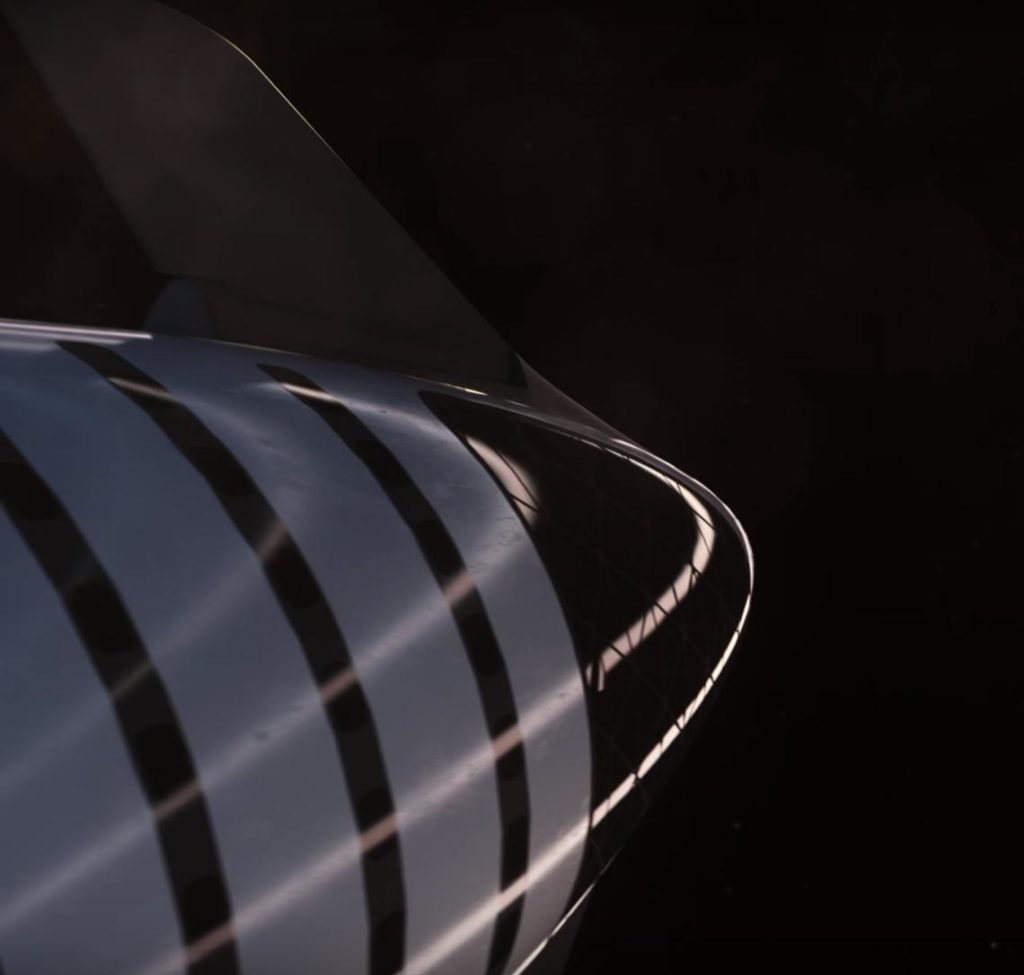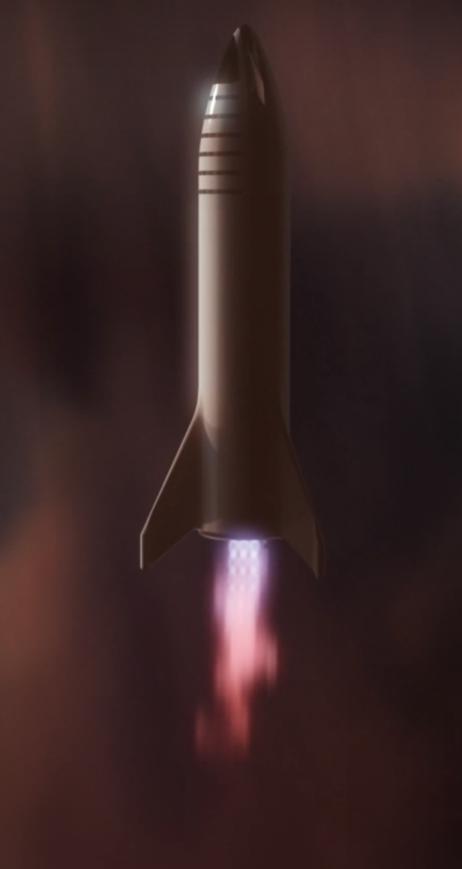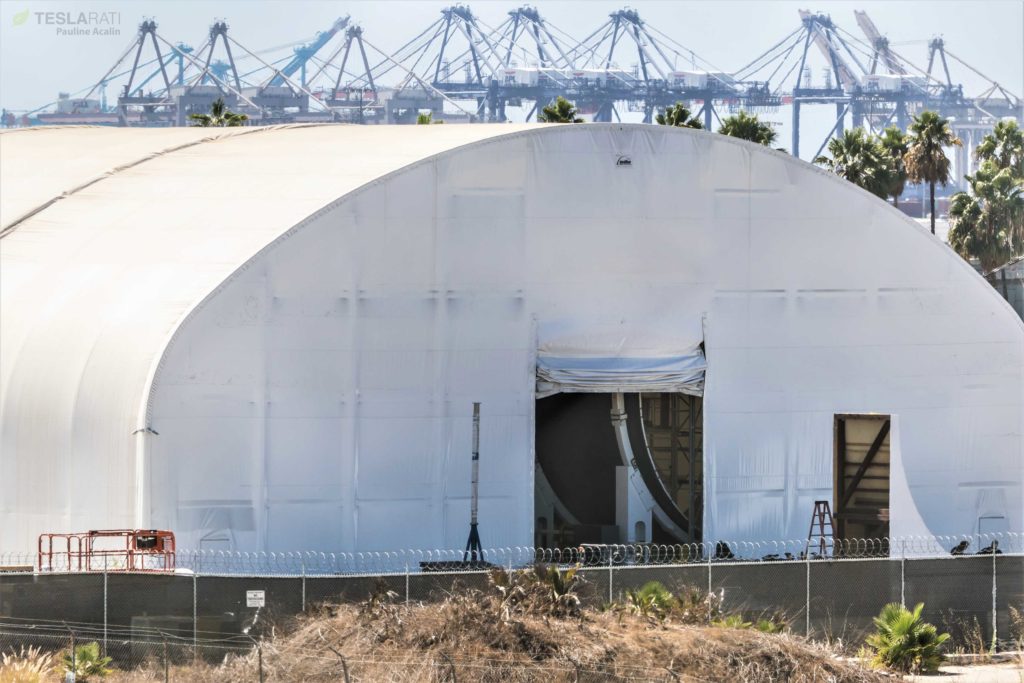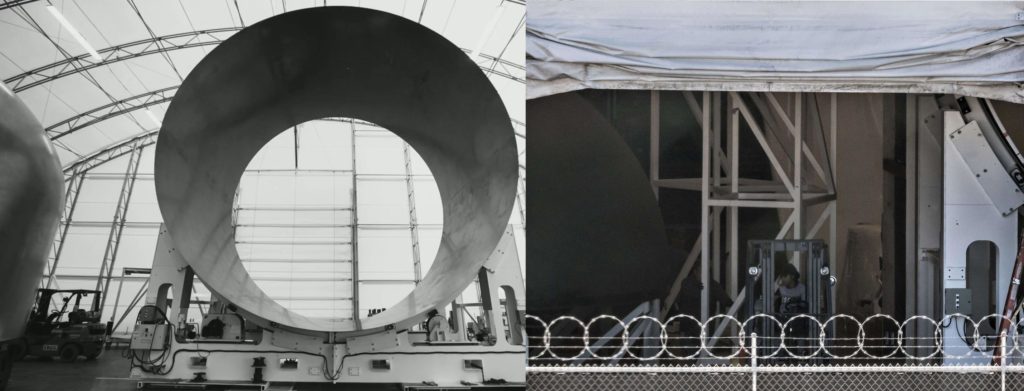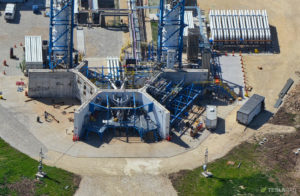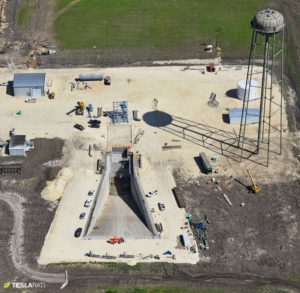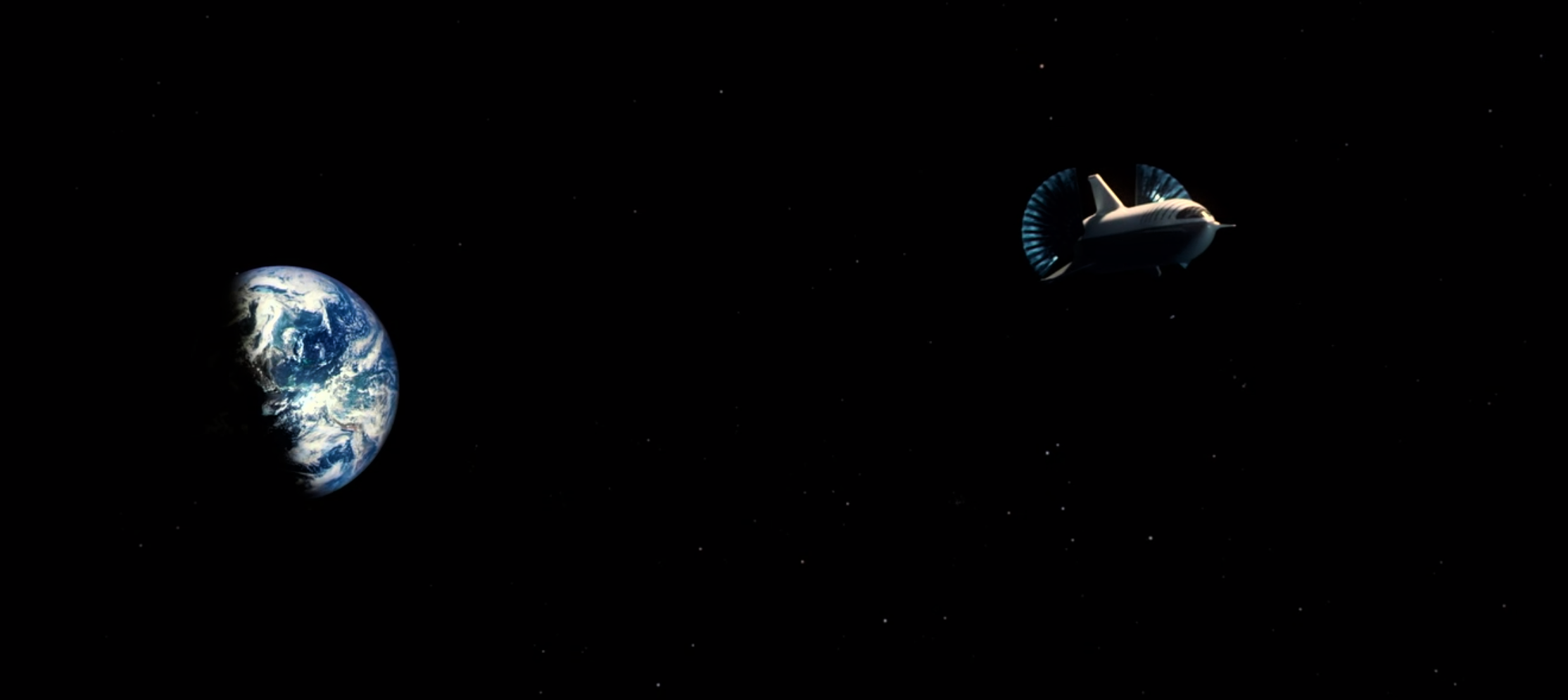
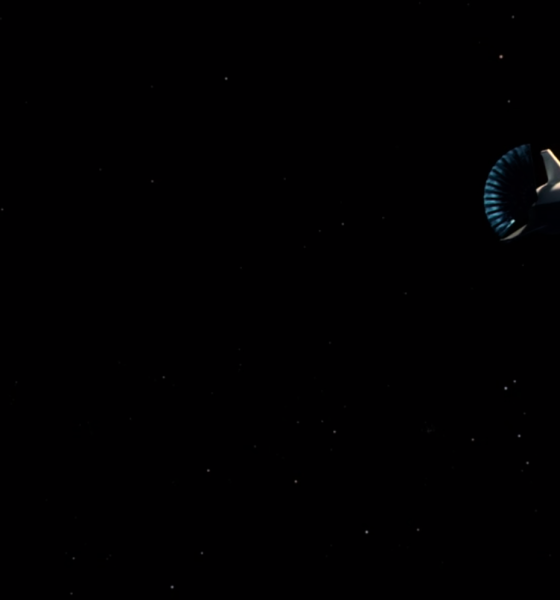
News
SpaceX CEO Elon Musk kills mini BFR spaceship 12 days after announcing it
Less than two weeks after SpaceX CEO Elon Musk announced that Falcon 9’s “second stage [would] be upgraded…like a mini-BFR Ship” to prove lightweight heatshield and hypersonic control surface technologies, Musk took to Twitter to assert that the mini BFR spaceship project was dead, despite having stated that SpaceX was working to launch that test article into orbit as early as June 2019 just 12 days prior.
From a public perspective, the status of SpaceX’s next-gen rocket program (known as BFR) is effectively up in the air after several cryptic and seemingly contradictory statements from the company’s CEO and chief engineer.
No, we’re just going to accelerate BFR
— Elon Musk (@elonmusk) November 20, 2018
On Nov. 17, Musk tweeted that BFR – last updated in September 2018 alongside a statement that “this is [likely] the the final iteration [of BFR] in terms of broad architectural decisions” – had already been redesigned, going so far as to describe it as a “radical change”. What that radical design change might be is almost entirely unclear, although Musk has now twice stated that the purpose of these changes (and the whiplash-inducing cancellation of the mini-spaceship) is to “accelerate BFR”.
Radical change
— Elon Musk (@elonmusk) November 17, 2018
As of now, SpaceX appears to have just completed a massive 9-meter diameter composite tank dome in the company’s temporary Port of Los Angeles tent, where a small but growing team of engineers and technicians are working to realize some version of the company’s next-generation rocket. That group has been working in near-silence for the better part of a year and has accepted delivery of and set up a wide range of custom-built tooling for carbon composite fabrication, and has even managed to get that tooling producing massive composite parts that are expected to eventually make up the structure of a spaceship prototype.
That prototype would eventually be shipped to South Texas, where SpaceX is constructing an entirely new facility from scratch to test the design, technology, and operation of the first full-scale BFR spaceship (BFS). As of a few months ago, the plan was to begin those hop tests before the end of 2019, but it’s no longer clear if SpaceX still intends to build a prototype spaceship to conduct hops and high-speed, high-altitude test flights.
- BFR’s spaceship design, as of 2018. (SpaceX)
- A BFS attempts a Mars landing in this official updated render. (SpaceX)
- SpaceX’s huge Port of LA-based BFR tent, September 18th. (Pauline Acalin)
- SpaceX’s first BFR spaceship prototype is coming together piece by piece. (SpaceX/Pauline Acalin)
Responsibly building giant rockets
One can only hope that the SpaceX employees tasked with bringing an already monumentally difficult idea from concept to reality are learning about these earth-shaking, “radical” decisions and changes through a medium other than Twitter. If those senior engineers and technicians are not extensively forewarned and given some say in these major system-wide decisions, it’s hard to exaggerate the amount of time, effort, and resources potentially being wasted (or at least misdirected).
There is undoubtedly something to be said for getting complex and difficult things as right as possible on the first serious try, especially when the sheer expense of the task at hand might mean that there is only one real chance to try. Still, it’s not particularly encouraging when a three-year-old hardware development program marked by several major design iterations is still experiencing anything close to “radical change”. After multiple years of concerted effort, BFR still appears to be in some sort of design limbo, where a constant and haphazard stream of on-paper changes act as a near-insurmountable hurdle standing in the way of a completed “good enough” blueprint that can begin to be made real.
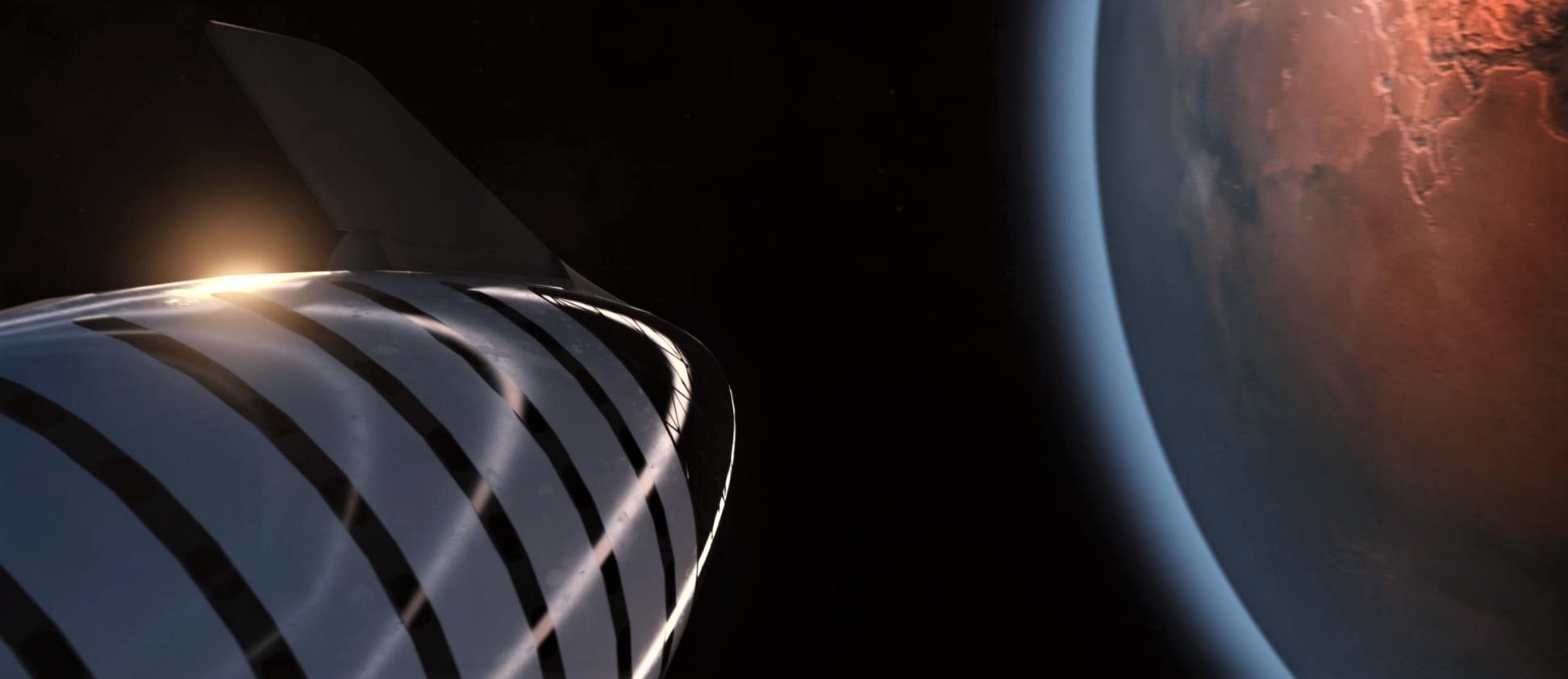
Ultimately, even if some of the worst-case scenarios described above turn out to be true, there are still many, many reasons to remain positive about SpaceX’s BFR program on the whole. The next-gen rocket’s propulsion system of choice – an advanced engine known as Raptor – is quite mature at this point and may already be nearing initial flight readiness. Regardless of any future changes to BFR’s overall spaceship and booster structures, SpaceX technicians, engineers, and material scientists have likely gained invaluable experience in pursuit of an unprecedented 9-meter diameter rocket built almost entirely out of carbon fiber composites.
Further, it appears that quite a bit of progress has been made over the course of R&D programs related to methane-oxygen RCS thrusters (Falcon uses nitrogen), autogenous tank pressurization with gaseous methane and oxygen (Falcon uses helium), and perhaps even in-situ resource utilization (ISRU) that will be an absolute necessity to generate water, oxygen, and methane that will keep prospective Mars colonists alive and refuel spaceships for the voyage back to Earth.
- SpaceX’s horizontal Raptor test stand is pictured here in April 2018. A prototype Raptor can be seen in the center bay. (Aero Photo/Teslarati)
- A new rocket test-stand takes shape at SpaceX’s McGregor, TX facilities. As of just a few months ago, this site was effectively barren of activity. (April 17, Aero Photo)
- SpaceX’s Boca Chica facilities now sport two massive propellant tanks, meant to support BFR spaceship hop tests. (NSF /u/ bocachicagal, SpaceX)
For prompt updates, on-the-ground perspectives, and unique glimpses of SpaceX’s rocket recovery fleet check out our brand new LaunchPad and LandingZone newsletters!

Elon Musk
Elon Musk’s X will start using a Tesla-like software update strategy
The initiative seems designed to accelerate updates to the social media platform, while maintaining maximum transparency.

Elon Musk’s social media platform X will adopt a Tesla-esque approach to software updates for its algorithm.
The initiative seems designed to accelerate updates to the social media platform, while maintaining maximum transparency.
X’s updates to its updates
As per Musk in a post on X, the social media company will be making a new algorithm to determine what organic and advertising posts are recommended to users. These updates would then be repeated every four weeks.
“We will make the new 𝕏 algorithm, including all code used to determine what organic and advertising posts are recommended to users, open source in 7 days. This will be repeated every 4 weeks, with comprehensive developer notes, to help you understand what changed,” Musk wrote in his post.
The initiative somewhat mirrors Tesla’s over-the-air update model, where vehicle software is regularly refined and pushed to users with detailed release notes. This should allow users to better understand the details of X’s every update and foster a healthy feedback loop for the social media platform.
xAI and X
X, formerly Twitter, has been acquired by Elon Musk’s artificial intelligence startup, xAI last year. Since then, xAI has seen a rapid rise in valuation. Following the company’s the company’s upsized $20 billion Series E funding round, estimates now suggest that xAI is worth tens about $230 to $235 billion. That’s several times larger than Tesla when Elon Musk received his controversial 2018 CEO Performance Award.
As per xAI, the Series E funding round attracted a diverse group of investors, including Valor Equity Partners, Stepstone Group, Fidelity Management & Research Company, Qatar Investment Authority, MGX, and Baron Capital Group, among others. Strategic partners NVIDIA and Cisco Investments also continued support for building the world’s largest GPU clusters.
News
Tesla FSD Supervised wins MotorTrend’s Best Driver Assistance Award
The decision marks a notable reversal for the publication from prior years, with judges citing major real-world improvements that pushed Tesla’s latest FSD software ahead of every competing ADAS system.

Tesla’s Full Self-Driving (Supervised) system has been named the best driver-assistance technology on the market, earning top honors at the 2026 MotorTrend Best Tech Awards.
The decision marks a notable reversal for the publication from prior years, with judges citing major real-world improvements that pushed Tesla’s latest FSD software ahead of every competing ADAS system. And it wasn’t even close.
MotorTrend reverses course
MotorTrend awarded Tesla FSD (Supervised) its 2026 Best Tech Driver Assistance title after extensive testing of the latest v14 software. The publication acknowledged that it had previously criticized earlier versions of FSD for erratic behavior and near-miss incidents, ultimately favoring rivals such as GM’s Super Cruise in earlier evaluations.
According to MotorTrend, the newest iteration of FSD resolved many of those shortcomings. Testers said v14 showed far smoother behavior in complex urban scenarios, including unprotected left turns, traffic circles, emergency vehicles, and dense city streets. While the system still requires constant driver supervision, judges concluded that no other advanced driver-assistance system currently matches its breadth of capability.
Unlike rival systems that rely on combinations of cameras, radar, lidar, and mapped highways, Tesla’s FSD operates using a camera-only approach and is capable of driving on city streets, rural roads, and freeways. MotorTrend stated that pure utility, the ability to handle nearly all road types, ultimately separated FSD from competitors like Ford BlueCruise, GM Super Cruise, and BMW’s Highway Assistant.
High cost and high capability
MotorTrend also addressed FSD’s pricing, which remains significantly higher than rival systems. Tesla currently charges $8,000 for a one-time purchase or $99 per month for a subscription, compared with far lower upfront and subscription costs from other automakers. The publication noted that the premium is justified given FSD’s unmatched scope and continuous software evolution.
Safety remained a central focus of the evaluation. While testers reported collision-free operation over thousands of miles, they noted ongoing concerns around FSD’s configurable driving modes, including options that allow aggressive driving and speeds beyond posted limits. MotorTrend emphasized that, like all Level 2 systems, FSD still depends on a fully attentive human driver at all times.
Despite those caveats, the publication concluded that Tesla’s rapid software progress fundamentally reshaped the competitive landscape. For drivers seeking the most capable hands-on driver-assistance system available today, MotorTrend concluded Tesla FSD (Supervised) now stands alone at the top.
News
Elon Musk’s Grokipedia surges to 5.6M articles, almost 79% of English Wikipedia
The explosive growth marks a major milestone for the AI-powered online encyclopedia, which was launched by Elon Musk’s xAI just months ago.

Elon Musk’s Grokipedia has grown to an impressive 5,615,201 articles as of today, closing in on 79% of the English Wikipedia’s current total of 7,119,376 articles.
The explosive growth marks a major milestone for the AI-powered online encyclopedia, which was launched by Elon Musk’s xAI just months ago. Needless to say, it would only be a matter of time before Grokipedia exceeds English Wikipedia in sheer volume.
Grokipedia’s rapid growth
xAI’s vision for Grokipedia emphasizes neutrality, while Grok’s reasoning capabilities allow for fast drafting and fact-checking. When Elon Musk announced the initiative in late September 2025, he noted that Grokipedia would be an improvement to Wikipedia because it would be designed to avoid bias.
At the time, Musk noted that Grokipedia “is a necessary step towards the xAI goal of understanding the Universe.”
Grokipedia was launched in late October, and while xAI was careful to list it only as Version 0.1 at the time, the online encyclopedia immediately earned praise. Wikipedia co-founder Larry Sanger highlighted the project’s innovative approach, noting how it leverages AI to fill knowledge gaps and enable rapid updates. Netizens also observed how Grokipedia tends to present articles in a more objective manner compared to Wikipedia, which is edited by humans.
Elon Musk’s ambitious plans
With 5,615,201 total articles, Grokipedia has now grown to almost 79% of English Wikipedia’s article base. This is incredibly quick, though Grokipedia remains text-only for now. xAI, for its part, has now updated the online encyclopedia’s iteration to v0.2.
Elon Musk has shared bold ideas for Grokipedia, including sending a record of the entire knowledge base to space as part of xAI’s mission to preserve and expand human understanding. At some point, Musk stated that Grokipedia will be renamed to Encyclopedia Galactica, and it will be sent to the cosmos.
“When Grokipedia is good enough (long way to go), we will change the name to Encyclopedia Galactica. It will be an open source distillation of all knowledge, including audio, images and video. Join xAI to help build the sci-fi version of the Library of Alexandria!” Musk wrote, adding in a later post that “Copies will be etched in stone and sent to the Moon, Mars and beyond. This time, it will not be lost.”
